A peep into western Russia in 2011 - Part 2
Pskov, Pechersky and Novgorod
These are 3 smaller towns located along our bus route from the Baltic to St Petersburg in north-west Russia. Not particularly famous as tourist sites; they happen to be on our route.
Pskov (1) – the sights
Pskov is an ancient town now with some 200,000 people, located just 20 km from the border with Estonia, one of the countries on the Baltic we visited. We spent a few hours at the old town centre. Shown at the Town Hall with a statue of Lenin. A bird is shitting on Lenin’s head.
A few words about Vladimir Lenin (1870 – 1924) – the Russian revolutionary, politician, and political theorist. He was the first and founding head of government of Soviet Russia from 1917 to 1924 and of the Soviet Union from 1922 to 1924. He became the international figurehead of communism and champion of the working class. His critics view him as the head of an authoritarian regime of political repression and horror killings. His legacy is a cult of personality devoted to him. Buildings and places are named after him, every places associated with him became museums and very village has his statue or bust. We have seen so many of his statues.
The main tourist attraction is the Pskov Krom, the old citadel dated to the 1400s. Shown a view by the Velikaya River, the entrance gate, walls and watch towers.
The main building is the 78 m high Trinity Cathedral founded in 1138 and rebuilt in the 1690s. Posing here is NL the 71 year old.
Pskov (2) – the homestay apartment
Pskov is not a popular tourist town for non-Russian speaking visitors, and we found nothing when we googled for accommodation on the English-language hotel-booking websites. GW had to get his Russian friend Mike in Moscow to book us a home-stay apartment found available in a Russian-language website.
And OMG, this 2-room apartment unit is located in some semi-abandoned housing area, those public accommodation provided by the former communist government, in a condition like those in the Armageddon movies featuring Arnold Schwarzenegger. Broken furniture and everything, and dirty like hell. Look like it has not been occupied for months. Even the true back-packer GW shook his head.
The owner came to open the door, collected his money, wished us "good luck", the only English words he seem to know, and promptly disappeared and never to be seen again. We stayed there for 2 nights. Luckily the lift was working. And it was near to bus routes. Actually there are hotels in the town. Just that they are not listed in the English-language hotel-booking websites.
Shown the apartment block and see the old cars parked, sign of poor neighbourhood. It is unfortunate I didn’t take photos of the interior of the apartment and present them here. I don’t normally do that – no point to relive bad experiences.
(Note in 2021 – accommodation is now available for online booking in the English-language websites like booking.com and agoda.com)
Pechersky – the monastery
This is another small town, 50 km west of Pskov. We made a day-trip to visit their Monastery of the Dormition of the Most Holy Theotokos (Assumption of the Holy Mother of God) dated to 1473. The monastery was founded around caves that were used by hermits before the monastery was formally established. It is an establishment of the Seto people, a minority ethnic group originated from Finland. This is a monastery in continuous use throughout its history, even during WW II and the communist Soviet Union days.
The visit is highly recommended by Lonely Planet. First shown at the St Nicholas Gate, with a Hong Kong tourist who travels alone. To go into the church buildings ladies have to put on a simple head scarf and a long grown (provided free).
The main church is the Uspensky Cathedral which is a part cave church. And beautiful buildings in the Main Square.
And more of the beautiful domes and spires.
Novgorod (1) – Novgorod Kremlin
It is also one of the most historic towns in Russia, with a population of 220,000. It was the capital of the Novgorod Republic established in the 1100s. Shown a shot of the old town, with a beautiful bridge over the Volkhov River and a sail boat.
The city is known for the variety and age of its medieval monuments. The palace or Novgorod Kremlin is a UNESCO World Heritage Site. Shown part of the fortress walls and towers of the Kremlin.
The most prominent building is the St. Sophia Cathedral, built between 1045 and 1050. It is one of the best preserved churches from the 11th century and probably the oldest structure still in use in Russia. The austere stone walls and 5 helmet-like domes are original features of Russian architecture.
The cathedral features famous bronze gates, like this elaborately decorated one hang in the west entrance, allegedly made in 1156. Shown also a glimpse of the interior of the cathedral, shot taken at the entrance, entry not allowed. It is also famous for its bells, on the bell tower and on the ground.
Near to the cathedral is this bronze monument called the Millennium of Russia, unveiled in 1862, depicting the most important figures from the country's history. The upper row of figures is cast in the round and the lower one is in relief.
Novgorod (2) – Church Park
Outside the Kremlin on the other side of the Volkhov River there is a place called the Church Park with some 10 small churches. Shown 2 of them.
St Petersburg
St Petersburg is the 2nd largest city in Russia, with a population of some 5 million. It is a relatively new city, founded by the Tzar Peter the Great in 1708.
It is historically and culturally associated with the birth of the Russian Empire and Russia's entry into modern history as a European great power. It was the capital of the Tsardom of Russia and the subsequent Russian Empire from 1713 to 1917. After the October Revolution in 1917, the capital was moved to Moscow.
Due to its close proximity to the other parts of Europe, English is more usable in this city, compared to Moscow. Road signs for major roads include the English names.
St Petersburg (1) – the Palace Square
This is the main square of the city and setting of many significant historical events, like the October Revolution in 1917. It is bounded on one side by the Winter Palace (1st photo) and on the other side the Building of the General Staff, with the Triumphant Arch as the entrance gate. The focal point of the square is the Alexander Column erected in 1834 to commemorate the Russian victory over Napoleon’s France. It is 47.5 m tall, most part of it made from a single piece of red granite.
St Petersburg (2) – Nevsky Prospekt, the main street
Shown buildings with Art Deco elements along this main street, and a canal cutting across it.
Fronting this main street are several churches, including the Church of St Catherine, a Catholic church, and the Kazan Cathedral, the main cathedral of the Russian Orthodox Church in the city. In front of the cathedral are 2 statues, one of them Michael Barclay de Tolly, a field marshal and Minister of War during Napoleon's invasion in 1812.
St Petersburg (3) – River Neva
Neva is the main river passing through the city. Buildings in the background fronting the river include the Winter Palace to the south and the Peter and Paul Fortress to the north. The red column is one of two Rostral Columns located at the cape of an island at the Neva delta. This is a victory monument for a naval battle. They also served as beacons in the old days.
St Petersburg (4) – The Peter and Paul Fortress
This is the original citadel of the city built in the early 1700s. Shown the entrance gate with a big coat of arms of the Russian Empire featuring a 2-headed eagle.
A notable building in the fortress is the Peter and Paul Cathedral, with a gilded dome. Its interior is richly decorated with gilded statues. About half of the Russian Tsars are buried inside the cathedral, with one royal tomb shown.
Most part of the place now come under the auspices of the St. Petersburg Museum of History, with permanent and temporary exhibitions on Russian history. The boy here is not a statue, but a real boy standing very still in full attention listening solemnly to the guide explaining something about Russian rockets. And the funny statue is not that of a joker, but Peter the Great, the reform-minded tsar said to have modernised Russia. The statue is dated to 1991.
St Petersburg (5) – Church of the Saviour of Spilled Blood
This is the iconic building of the city, completed in 1907, a design resembling the famed St Basil Cathedral in Moscow. In 1997, it was converted to become the Museum of Mosaics. The images in the Interior are not ordinary paintings, but matrix made of tiny mosaics pieces assembled to look like paintings.
St Petersburg (6) – The Hermitage
This is a museum of art and culture, one of the largest, oldest and most famous museums in the World. It is housed in the Winter Palace. The collection comprises nearly 3 million items. We had to queue nearly an hour to go in. Shown 2 exhibition halls, highlighting the luxuriously decorated former palace. A famous exhibit is the "Peacock Clock", a giant automatic clock made by James Cox in 1772.
Being one of the largest museums in the World, the collections and exhibits are in fact all encompassing: prehistoric arts, antiquities, decorative arts, classical, Renaissance, modern, etc. Shown some samples. For sculptures, we have "Prometheus and the First Man" by Pietro Stagi, dated to late 1700s. For paintings, we have "Madonna with Child" painted by Leonardo da Vinci in the 1480s, and the 1910 masterpiece "La Danse" by Henry Matisse.
St Petersburg (7) – Statues and Monuments
There are many of them decorating every corner of the city. Shown the great poet Alexander Pushkin (1799-1837), the Tzar Peter the Great (1672-1725), Nicholas I (1796-1855) the Tsar during whose rule Russia reached the zenith of power, and the Column of Glory, in memory of the Russian victory in the war with Turkey in 1878, and Empresses Catherine the Great (1729-1796).
St Petersburg (8) – Other beautiful churches
There are many churches in this city, shown facades of 3 more beautiful ones: St Isaac's Cathedral, St Nicolas Naval Cathedral and the Trinity Cathedral. All Russian Orthodox churches.
Also the St Petersburg Mosque, constructed in 1913 and could accommodate 5,000 worshippers. We did not go inside.
St Petersburg (9) – Peterhof Palace
The palace is located at the town of Peterhof, 26 km west of St Petersburg city centre. This is a series of palace buildings and gardens laid out on the order of Peter the Great in the early 1700s. It is a UNESCO World Heritage Site. The 1st 2 photo show the Upper Garden and part of the palace buildings. The next 2 show the Lower Garden and part of the Grand Cascade.
The Grand Cascade, at the Lower Garden in front of the Grand Palace is the masterpiece of 64 fountains and statues. The fountains operate via gravity forces, no pumping required. The most famous is the Samson Fountain, 3rd and 4th photos. It depicts Samson tearing open the jaws of a lion, representing the Russian victory over Sweden in the recent war. The water jet shot out from the lion’s mouth is 20 m high.
Miscellaneous (1) – Special tour guide in Moscow
As I have mentioned at the beginning, language is a big issue in Russian. In Moscow, our trip initiator GW arranged for his friends Mike/Kate who reside in Moscow to be our Moscow city guides over the 2 days of the weekend. Kate spoke excellent English. Many thanks to them otherwise our 1st days in Russian could be disastrous because of the language problem. Shown our group photo at the All-Russia Exhibition Centre.
(Note in 2021: Mike and Kate came to Malaysia (short visit to KL and Penang only) in late 2012 and stayed in our condo in KL for 2 nights. NL hosted a Chinese dinner for them, while we treated them with Indian banana leaf rice in Kanna in Section 17, PJ as well as hawker food in Petaling Street. We became their tour guides in KL. The 1st place they wanted to see in KL was Batu Caves!)
Miscellaneous (2) – Back-pack tour
This is our 1st "real" back-pack trip, back-pack in the sense of travel in the most cost-saving way in transport and lodging. Our tour initiator GW, the young man from Hong Kong, is a real and experienced pack-packer. What he has planned is the cheapest accommodation he could find and book, which could be 15 or 20 minutes’ walk from the main bus or train station. No taxi, so we have to carry our lugguge and walk for that 15 to 20 minutes. On this trip I carried a 10-12 kg bag at the back. The big cheap laptop and the charger are heavy. And a 4-5 kg bag in front (including my big camera). My wife also carried 2 bags, a 6-7 kg bag on her back. Just about manageable.
(Note in 2021: No smart phone then, we need a lap top for easy email communication, checking our hostel booking, bus schedule, etc)
In the initial days, GW always insisted on walking. No taxi. We later suspected that he just wanted to save cost by not taking taxi. So we offered that we 3 would pay for the taxi with the excuse that we seniors could not walk any more. He had no objection with such rides. But getting a taxi was not that easy, as there were not many taxis in service, and there was no taxi-hailing service then. Only at the main bus station or train station that we could get taxi easily. The language issue came in too. We still ended up walking most of the time.
(Note in 2021: Besides the cheap apartment in Pskov I mentioned earlier, the place we booked in Moscow was also almost uninhabitable. It was a home stay, with an over-weight landlady. A small room for two and the whole apartment is like a recycling centre with all kind of rubbish or “treasure”. 4 nights there. Quite an experience. Thinking about it now, it should be viewed as a positive experience that have enriched our life.)
Footnote
On this same trip we also visited the 3 small countries fronting the Baltic Sea. That is another story. Combining that part with Russia together is too long a story.
(First written in the email format in August 2011. Heavily revised to this PDF format in May 2021)





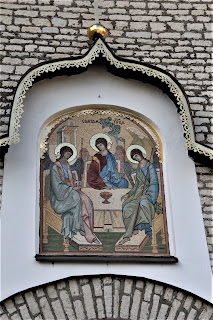





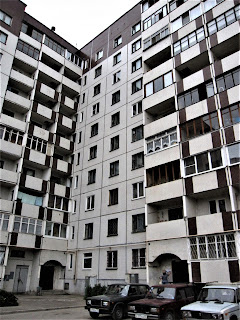

















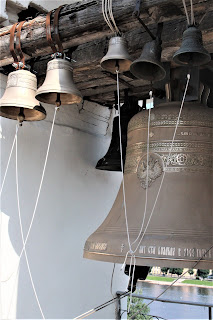

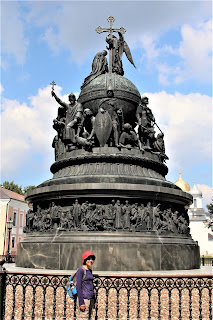

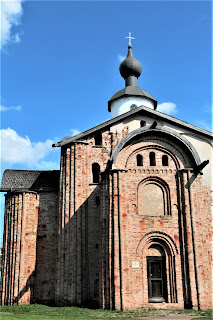

















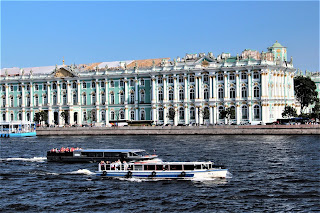






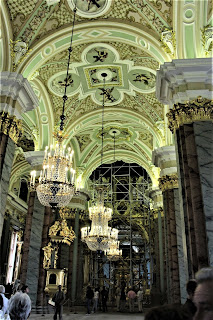


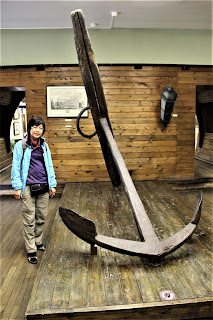

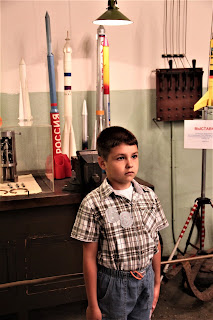
























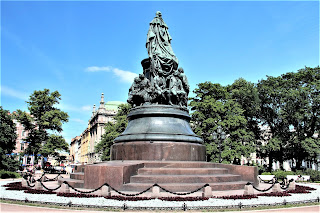








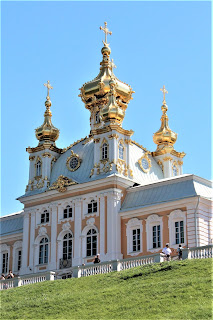






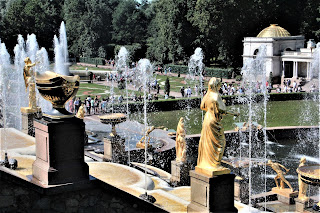






No comments:
Post a Comment